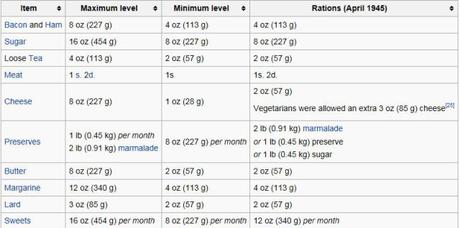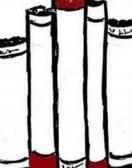Last year author Juliet Greenwood (We That Are left, Honno Press)) wrote a guest blog post on the topic of producing and preparing food for the Home Front during the First World War. In her novel, the main protagonist, Elin goes back to her mother’s old recipe book to help her produce nutritious recipes for wartime. Recipes from the period were reproduced at the end of the book, some of which you can find on Juliet’s guest post. I have gradually tried out Juliet’s recipes, most recently the seed cake, which I have blogged about over on Curiously Creatively this week. It was most delicious!

Reprinted edition
As Juliet pointed out at the time, rationing only came about towards the end of World War I, and lessons learned from this conflict influenced rationing decisions in the Second World War. I was reminded of this when I was browsing recently in Hodges Figgis and spotted a reprint of a Second World War diary. Few Oranges and No Eggs (Persephone, 1991, 2010) was the work of Birmingham born Vere Hodgson (1901-1979) who began work in London in 1935 and stayed there throughout the war. She worked for the Greater World Christian Spiritualist Association in a welfare role and helped to produce the association’s newspaper. The office was in a house (named The Sanctuary) in Lansdowne Road and Vere lived nearby in Ladbrooke Road, though she often spent the nights of The Blitz at The Sanctuary taking a turn on fire watch duty. Although the diary entries continue until VE Day, I have just quoted from the early part of the book to give you some idea of Vere’s life. The diary actually began life as letters sent around to family members and then posted out to a cousin in Rhodesia. Only one batch of letters ever got lost en route. Not bad for a war-time postal service!
As the book’s title suggests, one of the major preoccupations of the author was obtaining food during the lean years of the war. On 9th July 1940, Vere Hodgson was recording that “We are to have six ounces of butter cum margarine, and two ounces of cooking fat” and on 16th July she was writing of the shortage of eggs in London, declaring, “I shall have to switch over to baked beans”. Rationing restrictions changed over the years, but began in January 1940 with bacon, butter and sugar. Later, several other food products were added to the rationed list and supplies of fresh fruit and vegetables were limited, though not rationed. Tinned products were un-rationed but you needed points to buy the food. The chart I have included (taken from Wikipedia) will give some idea of the range of weekly rationing, from lowest to highest. Not on the chart are eggs (one per week) and milk (3 pints per week). There were increased milk rations for children, pregnant women and invalids and oranges, when available were usually only for children or pregnant women.

Ration Chart
Vere’s observations marked the daily difficulties of obtaining scarce supplies and the alteration in the rations. Despite fruit not being rationed, imported fruits such as bananas and oranges were obviously hard to come by at all. Prices of homegrown produce varied a great deal as this entry from February 1941 shows, “Bought a pound of apples yesterday for one shilling…what a price. No oranges at all, at all. Very annoying.” Later that month she notes that the cheese rationing will probably amount to a one inch cube per week. At that point, it was immaterial as none was available in her area anyway.
One of the effects of rationing and shortages appeared to be that people craved that which they would not ordinarily have eaten, such as in this case, onions. “Mr Booker was saying that though he hates onions, when once more we can get them he will sit down and really enjoy one. I think we shall go in for onion binges when the war is over”. (16th February 1941) I have a vision of Vere tucking into endless plates of fried onions after the war. In many entries such as this one, Vere displays that sense of humor and stoicism that enabled many people to carry on despite the shortages. I will just finish with this excerpt from 22nd February 1941, which details the proceeds of a shopping expedition:
Managed to get a few eating apples yesterday to my great joy. I treated myself – they are one shilling and one penny per pound. I carried them home as if they were the Crown Jewels. Also had some luck over cheese. Went for my bacon ration and while cutting it had a word with the man about the Cubic Inch of Cheese. He got rid of the other customers and then whispered, ‘Wait a mo’.’ I found half a pound of cheese being thrust into my bag with great secrecy and speed!
Then going to the Dairy for my butter ration I was given four eggs and a quarter of cheese! Had no compunction in taking it, for I went straight to my Mercury Cafe and gave it to them….they had said they did not think they could open the next day as they had no meat and only a morsel of cheese. I could not resist, when I got in, cutting off a hunk of my piece and eating it there and then. I always sympathised with Ben Gunn when he dreamed of toasted cheese on that desert island.
If you’ve never come across this diary, I recommend it for the day-to-day picture of war-time life. The experiences are particular to one educated, middle class woman but it does give you a vivid picture of what life must have like for Londoners and Brummies in all walks of life as they coped with the destruction and privation on the Home Front. This is one book that I am sure I will dip into again and again. Vere Hodgson’s voice is lively and compassionate; her conscientious recording of all that happens draws the reader into her world.
I have also written a piece for Headstuff if you would like to read it too: http://www.headstuff.org/2015/05/exploring-a-wartime-diarist-vere-hodgson/
Until next time!

